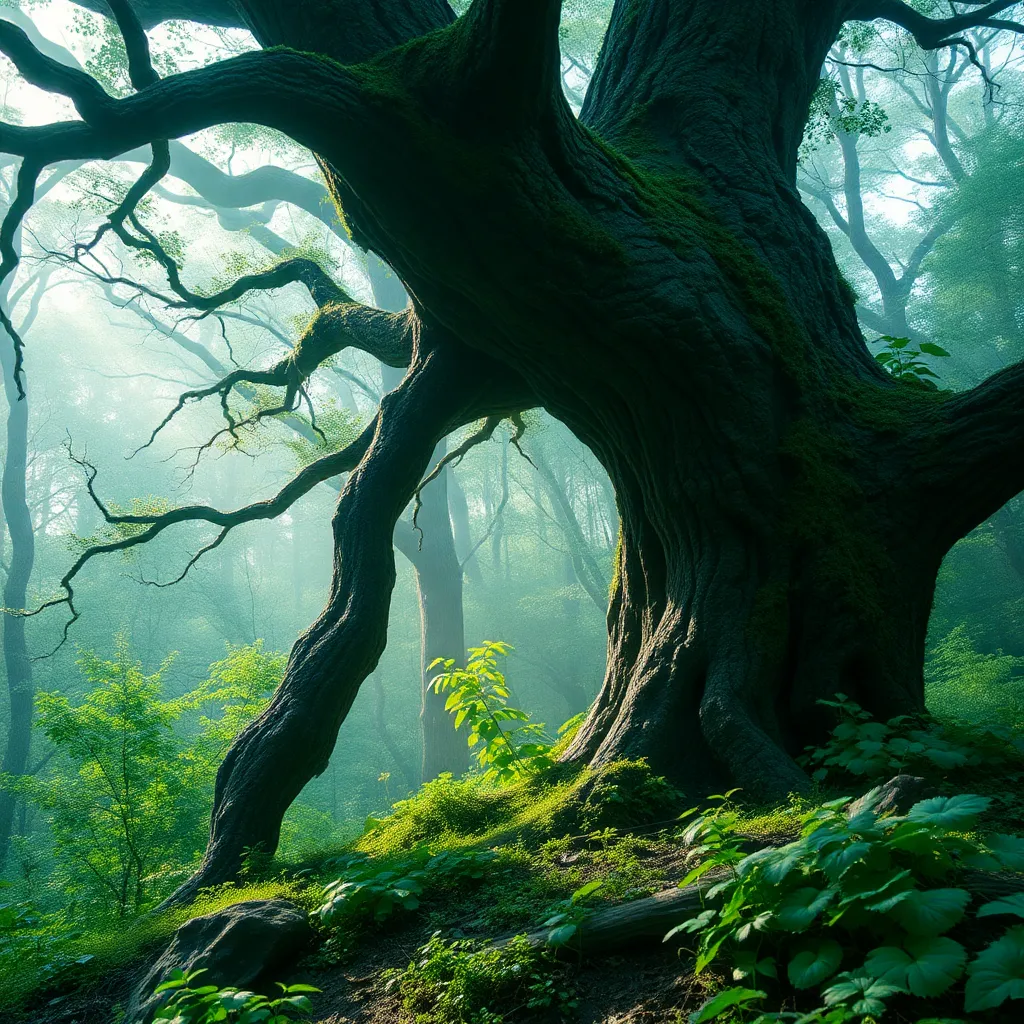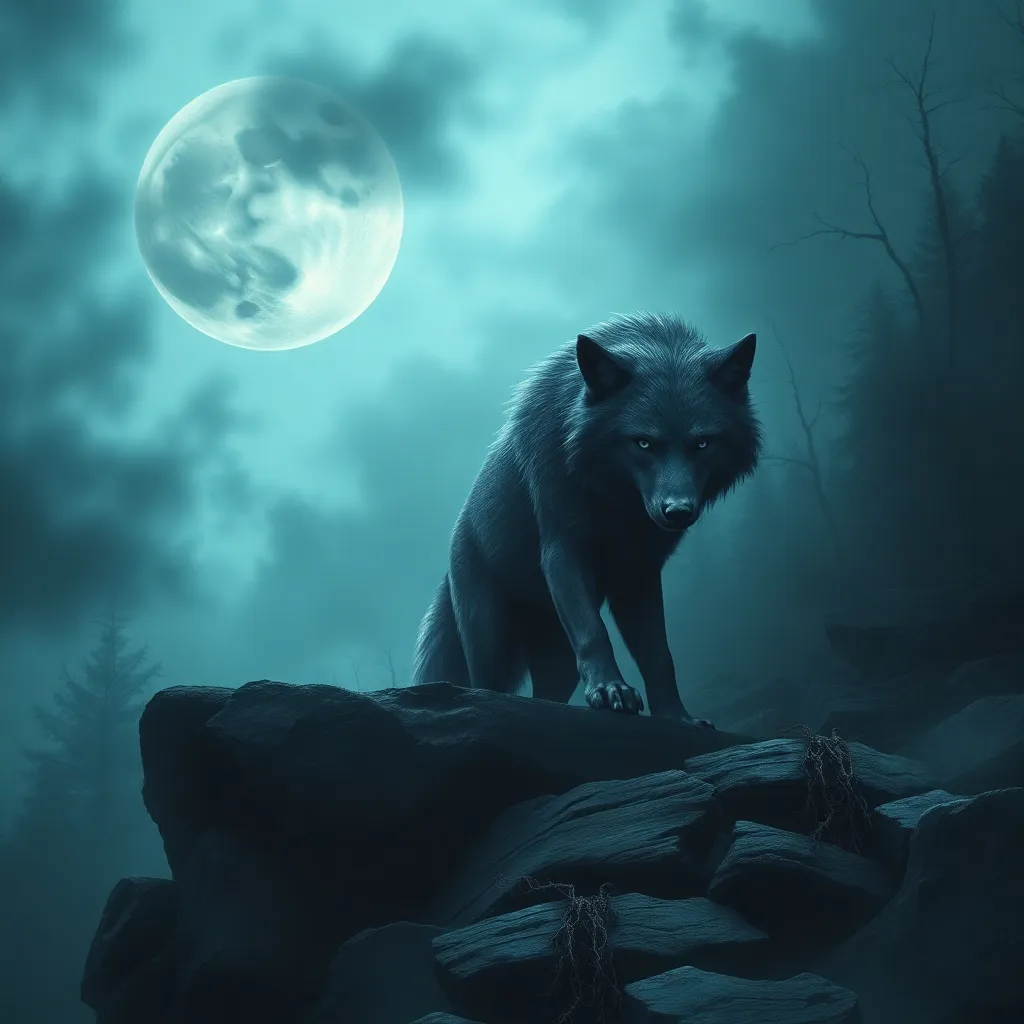The Giants of Japanese Mythology: From Oni to Tengu
I. Introduction
Japanese mythology is a rich tapestry woven with stories that reflect the cultural, spiritual, and historical essence of Japan. It is significant not only for its narrative quality but also for the insights it provides into the values and beliefs of the Japanese people. Among the many figures that populate these myths, giants—both in size and influence—play a crucial role.
This article explores the concept of giants in Japanese folklore, focusing specifically on two of the most prominent figures: Oni and Tengu. We aim to delve into their characteristics, origins, and cultural significance, providing a comprehensive overview of their role within the broader context of Japanese mythology.
II. Understanding Japanese Mythology
A. Brief history and cultural context
Japanese mythology has roots in ancient traditions, with influences from Shinto, Buddhism, and folklore. It encompasses a wide range of deities, spirits, and mythical creatures, reflecting the diverse beliefs and practices that have evolved over centuries.
B. Key themes and motifs in Japanese myths
Common themes include:
- The struggle between good and evil
- The importance of nature and the supernatural
- Transformation and the duality of beings
C. The role of supernatural beings in Japanese belief systems
Supernatural beings in Japanese myths often embody natural forces or human traits. They serve as moral lessons, cautionary tales, and reflections of societal fears and aspirations.
III. Oni: The Fearsome Demons
A. Description and characteristics of Oni
Oni are often depicted as fearsome demons with horns, sharp claws, and wild hair. They are typically portrayed in vivid colors—red, blue, or green—and are known for their brutish strength and malevolent nature.
B. Origins and evolution of the Oni legend
The origins of Oni can be traced back to early Japanese folklore, possibly influenced by Buddhist demons. Over time, they have come to symbolize various societal fears, including the consequences of evil deeds and the dangers of excess.
C. Cultural impact and representations in art and literature
Oni have had a profound impact on Japanese culture, appearing in traditional art, literature, and festivals. They are often featured in:
- Ukiyo-e prints
- Noh and Kabuki theater
- Folktales and children’s stories
One of the most famous representations of Oni can be found in the annual Setsubun festival, where beans are thrown to dispel evil spirits.
IV. Tengu: The Guardians of the Mountains
A. Description and characteristics of Tengu
Tengu are mythical creatures often depicted with human and bird-like features. They are known for their long noses, red faces, and the ability to fly. Unlike Oni, Tengu are sometimes viewed as protectors of the mountains and forests.
B. Historical origins and transformation over time
The concept of Tengu has evolved from early depictions as disruptive spirits to more complex characters who embody both the heroic and the mischievous. Initially influenced by Buddhist teachings, Tengu became associated with the ascetic practices of mountain-dwelling monks.
C. Tengu’s role in Japanese folklore and religion
Tengu are often seen as guardians of nature, revered by some and feared by others. They appear in various narratives, often challenging heroes or teaching them important lessons about humility and respect for nature.
V. Other Notable Giants in Japanese Mythology
A. Yōkai: Spirits and monsters in Japanese culture
Yōkai are a broad category of supernatural entities that include a variety of spirits and monsters. They reflect the fears and superstitions of everyday life, ranging from mischievous tricksters to vengeful spirits.
B. Jorōgumo: The spider woman and her myth
Jorōgumo is a mythical creature that can transform from a spider into a beautiful woman. She is known for luring unsuspecting men to her lair, where she ultimately preys on them, representing themes of seduction and danger.
C. Kappa: The water-dwelling creatures and their significance
Kappa are water spirits that resemble turtles or amphibians. They are known for their mischievous behavior and can be both helpful and harmful. Kappa symbolize the dangers of water and the importance of respect for nature and its creatures.
VI. The Interplay of Giants in Japanese Folklore
A. Relationships and conflicts between different giants
In many myths, giants like Oni and Tengu interact in complex ways. They often represent opposing forces, such as chaos versus order, and their conflicts reflect greater societal struggles.
B. Symbolism of giants in Japanese stories
Giants symbolize various aspects of human experience, including:
- The duality of good and evil
- The struggle for power
- The importance of balance in nature
C. How these giants reflect societal values and fears
The portrayal of giants in Japanese mythology often mirrors societal values, fears, and aspirations, serving as a lens through which the culture can examine itself.
VII. Modern Interpretations and Popular Culture
A. Representation of Oni and Tengu in contemporary media
Today, Oni and Tengu continue to captivate audiences through various forms of media, including films, television shows, and literature. Their depictions often blend traditional characteristics with modern interpretations.
B. Influence on anime, manga, and video games
Oni and Tengu are frequently featured in anime and manga, where they may serve as protagonists, antagonists, or comic relief. Their influence extends to video games, where they often embody unique abilities and characteristics.
C. The resurgence of interest in traditional myths
In recent years, there has been a resurgence of interest in traditional Japanese myths and folklore, leading to a renaissance of storytelling that honors the past while engaging new audiences.
VIII. Conclusion
The giants of Japanese mythology, including Oni, Tengu, and others, play a significant role in shaping the cultural landscape of Japan. They serve as powerful symbols that reflect the complexities of human nature, societal values, and the relationship between humanity and the natural world.
As we explore these fascinating characters, we gain insight into the enduring legacies they leave behind, reminding us of the importance of understanding and appreciating the rich tapestry of Japanese mythology and culture.
We encourage readers to delve deeper into these myths, exploring the stories and symbols that continue to resonate in contemporary society.



